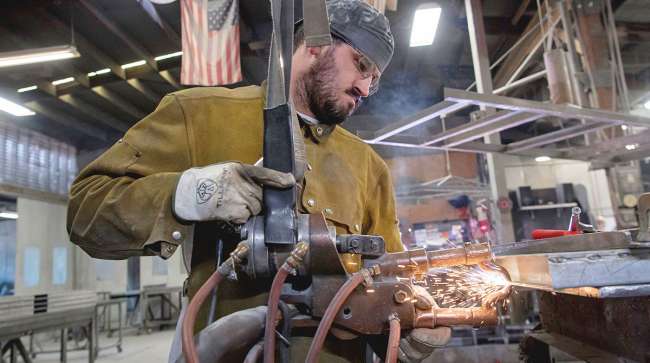Manufacturing Expands at Slowest Pace in Two Years

[Stay on top of transportation news: Get TTNews in your inbox.]
U.S. manufacturing activity continued to cool in July as more factories dialed back production in the face of shrinking orders and rising inventories.
The Institute for Supply Management’s gauge of factory activity eased to 52.8, the lowest level since June 2020, from 53 a month earlier, according to data released Aug 1. Readings above 50 indicate expansion, and the latest figure compared with a median projection of 52 in a Bloomberg survey of economists.
The group’s measure of production also fell to a more than two-year low, and its gauge of new orders remained in contraction territory for a second month. The figures highlight softer demand for merchandise as the economy struggles for momentum.
Some companies are holding off on new orders, supplier deliveries picked up speed, and prices growth slowed significantly. Those details and more in the #Manufacturing @ISM® Report On Business® for July; the PMI® was 52.8%. https://t.co/rrqxhfLmyS #ISMPMI #economy #inflation — Institute for Supply Management (@ism) August 1, 2022
“Panelists are now expressing concern about a softening in the economy, as new order rates contracted for the second month amid developing anxiety about excess inventory in the supply chain,” said Timothy Fiore, chair of ISM’s Manufacturing Business Survey Committee.
The ISM factory inventories index rose to 57.3, the highest since 1984 and suggesting stockpiles are mounting at more manufacturers. While many producers have been adding to inventories in the event of further supply chain disruptions, the increase may also suggest some of the build is unintended.
Separate data from S&P Global showed a buildup in finished goods inventories for the first time since October 2020. That group’s final July overall factory purchasing managers index slipped to 52.2, a two-year low.
Want more news? Listen to today's daily briefing above or go here for more info
The ISM overall index is down almost 11 points from its multidecade peak in March of last year, when producers were scrambling to meet pent-up demand as the economy emerged from pandemic lockdowns. Spending on merchandise has since slowed as consumption patterns started shifting from goods to services.
Eleven manufacturing industries reported growth in July, led by apparel, minerals and petroleum and coal products. Seven industries reported a contraction, led by wood products, furniture and paper.
The ISM and S&P Global manufacturing data are consistent with a general slowdown in other parts of the world. European factory activity slumped last month and manufacturing output in Asia continued to weaken.
— With assistance from Chris Middleton.



